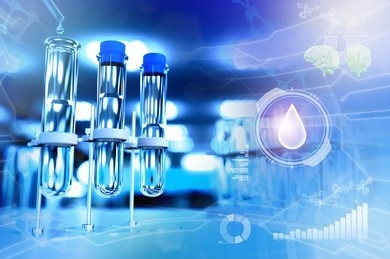Most of the drugs taken by humans and livestock are not absorbed and used but enter the environment with excrement. Personal toiletries also enter the environment directly when washing, bathing, and swimming. Although the residual concentrations are only traced levels, there is a constant input source, resulting in a "pseudo-persistent" state in the aquatic environment, thus posing a potential risk to aquatic organisms and even affecting human health through the food chain.

More studies have shown that pharmaceutical pollution has become a new type of persistent organic pollutant in the aquatic environment. Therefore, Lifeasible has built a testing platform for these emerging organic contaminants, which can provide accurate and rapid analysis of various prescription drugs, over-the-counter drugs, and personal toiletries residues in water from multiple sources (inlet and outlet water from wastewater treatment plants, surface water, groundwater, and even drinking water).
| Drugs | Personal toiletries |
|
|
There are many types of pharmaceutical contaminants with different physical and chemical properties, biological activity and other properties, and low concentrations in the environment, so sample pre-treatment (concentration, enrichment) is a vital part of Lifeasible's work for detection and analysis. Our commonly used extraction methods are liquid-liquid extraction (LLE), solid-phase extraction (SPE), and solid-phase microextraction (SPME), which can be applied to the analysis process of steroids, anti-inflammatory drugs, estrogens, and other drugs in water samples.
| Methods | Features | |
| High-performance liquid chromatography (HPLC) technology | Ultra high-performance liquid chromatography-UV (UPLC-UV) | It can be used to detect antibiotic drug residues in the aqueous environment, with the advantages of high separation, high speed, high sensitivity, and lower cost. |
| HPLC with a fluorescence detector (HPLC-FLD) | The method is highly sensitive and can be used to directly detect drug residues that are fluorescent in themselves. For non-fluorescent or poorly fluorescent drug residues, the fluorescence of the target can also be improved by derivatization and then detected. | |
| HPLC-tandem mass spectrometry (HPLC-MS/MS) | This method has a broader analytical range, higher sensitivity, lower detection limits, more reliable qualitative structure. It can simultaneously detect various drug component contaminants in water, which is essential for the qualitative and quantitative analysis of trace and trace components in complex compounds. | |
| Terahertz time-domain spectroscopy (THz-TDS) technology | THz-TDS technology is a new technology of far-infrared band spectrometry based on femtosecond ultrafast laser technology. Lifeasible uses the characteristic absorption of THz radiation to analyze residual drug components, structures, and their interactions, and can simultaneously obtain the dispersive properties and absorption information of residual drugs in the THz band. It has the advantages of high signal-to-noise ratio, safe and non-destructive, high sensitivity, fast detection speed, fingerprint spectroscopy, etc. It can detect drug residual contaminants in water quickly and easily, specifically and sensitively, with low consumption, and its detection sensitivity has reached the pg/L level. | |
| Immunoassay | Lifeasible has established a semi-quantitative immunoassay method for detecting drug residues in water, which has the advantages of high sensitivity, good specificity, simplicity, and economy. These include enzyme-linked immunosorbent assay (ELISA), fluorescence immunoassay (FIA), time-resolved fluorescence analysis (TRFIA), radioimmunoassay (RIA), electrochemical biosensor, and surface plasmon resonance (SPR) technique. | |
| Surface-enhanced Raman spectroscopy (SERS) technique | This method has the advantages of short detection time, high sensitivity, easy operation, and low water interference to detect drug residue polar molecules in water. | |
Pharmaceutical residues are typically present in water at trace levels, so Lifeasible offers appropriate sample pre-treatment techniques and reliable contaminant detection technologies combined with highly sensitive detection instruments, which are critical to our pharmaceutical residue testing services in water. Please contact our staff for targeted solutions for each of our clients.
Lifeasible has established a one-stop service platform for plants. In addition to obtaining customized solutions for plant genetic engineering, customers can also conduct follow-up analysis and research on plants through our analysis platform. The analytical services we provide include but are not limited to the following:
STU-CRISPR System Improves Plant Genome Editing Efficiency
April 19, 2024
Application of Exosomes in Facial Beauty
April 12, 2024